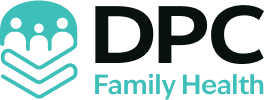Can primary care really be the cornerstone of managing long-term illnesses? Studies show that 60% of Americans live with a chronic condition, and many deal with several at once. Primary care providers offer continuous oversight and coordinated treatment planning for illnesses such as diabetes, hypertension, and asthma. Their patient-centered approach promotes regular check-ups and personalized lifestyle adjustments, making them indispensable in early detection and ongoing management. This article explains how foundational primary care enhances the health experience and supports better disease outcomes.
Primary Care as a Cornerstone in Chronic Condition Management
Primary care lies at the forefront of managing long-term illnesses by providing coordinated treatment planning and regular follow-ups that support patients through every stage of chronic condition management. Providers combine clinical insight with integrative care delivery, addressing physical symptoms and mental health needs in a single setting. This approach builds a stable foundation by ensuring that care is continuously adjusted to align with evolving patient requirements while fostering communication among diverse healthcare team members.
- Medication regimen adjustments
- Behavioral health integration
- Continuous patient monitoring
- Individualized lifestyle counseling
Primary care teams use these interventions to coordinate efforts and optimize treatment, reducing the likelihood of complications and hospitalizations. The structured patient care process, which includes collecting, assessing, planning, implementing, and following up on treatment plans, demonstrates a commitment to precision and flexibility. By incorporating the pharmacist patient care process, clinicians customize medication management and behavioral health support, addressing the needs of over half of patients who may experience undiagnosed mental health concerns.
A multidisciplinary approach unites physicians, nurse practitioners, pharmacists, and behavioral health specialists to offer comprehensive services. This collaborative model supports both proactive health oversight and rapid response to changes in a patient’s condition. In doing so, primary care not only improves clinical outcomes but also enhances overall patient engagement, building a robust system that serves as the cornerstone of effective chronic disease management.
Multidisciplinary Approaches and Care Coordination in Chronic Condition Management

Primary care utilizes collaborative models where various professionals come together to manage chronic conditions effectively. Integrated care teams consist of clinicians with diversified expertise who coordinate efforts to provide continuous oversight for patients, ensuring that all aspects of health are addressed simultaneously. This method reduces unnecessary hospital admissions and supports comprehensive treatment.
- Physician coordination
- Pharmacist review
- Nutritional guidance
- Mental health support
- Routine monitoring
Integrated team collaboration means that every member contributes expertise that sharpens treatment plans and responds to patient needs promptly. Physicians ensure overall clinical supervision, pharmacists modify medication regimens based on the care process, dietitians offer nutritional support, and behavioral health specialists address mental health needs. Routine monitoring by the team confirms that any change in patient status is quickly identified and managed.
Teamwork in multidisciplinary settings improves patient outcomes by minimizing treatment gaps and streamlining communication between providers. When professionals share information and align on care coordination practices, interventions become more focused and responsive. Such collaboration not only supports better clinical results but also increases patients’ confidence in managing their conditions.
Integrated care enhances service accessibility and treatment quality by leveraging the unique skills of each health team member. Policy changes and adjustments in reimbursement models remain necessary to sustain these collaborative models; nonetheless, the collective effectiveness in chronic disease oversight underscores the value of such an approach in modern primary care delivery.
Final Words
In the action, primary care forms the foundation for effective chronic disease oversight by combining early detection, continuous monitoring, and engaging patient education.
The article reviewed strategies such as medication reviews, nutritional guidance, and regular screenings that improve health outcomes.
The Role of Primary Care in Managing Chronic Conditions highlights how integrated care and evolving innovations foster improved treatment quality and empower patients for a brighter future.
FAQ
What is the main role of primary care in chronic condition management?
A: Primary care provides comprehensive health oversight through regular monitoring, medication management, and preventive screenings. It serves as the first point of contact for patients with long-term conditions like diabetes and hypertension.
How do primary care providers coordinate chronic disease care?
A: Primary care providers organize treatment plans, schedule follow-ups, adjust medications, and connect patients with specialists. They implement a structured care process to collect data, assess needs, and monitor progress.
What preventive strategies do primary care practices use?
A: Primary care practices conduct routine health screenings, provide immunizations, offer lifestyle counseling, and create personalized prevention plans. These measures help detect and address health issues early.
How does a multidisciplinary team approach benefit patients?
A: Multidisciplinary teams combine expertise from doctors, nurses, pharmacists, and specialists to provide complete care. This collaborative approach reduces hospital admissions and improves treatment outcomes.
What role does patient education play in chronic condition management?
A: Patient education focuses on self-management skills, medication adherence, and lifestyle modifications. This knowledge helps patients maintain better health and prevent complications.
How are primary care practices using technology to manage chronic conditions?
A: Primary care practices implement remote monitoring tools, virtual consultations, and digital health tracking systems. These technologies improve access to care and enable continuous patient oversight.

